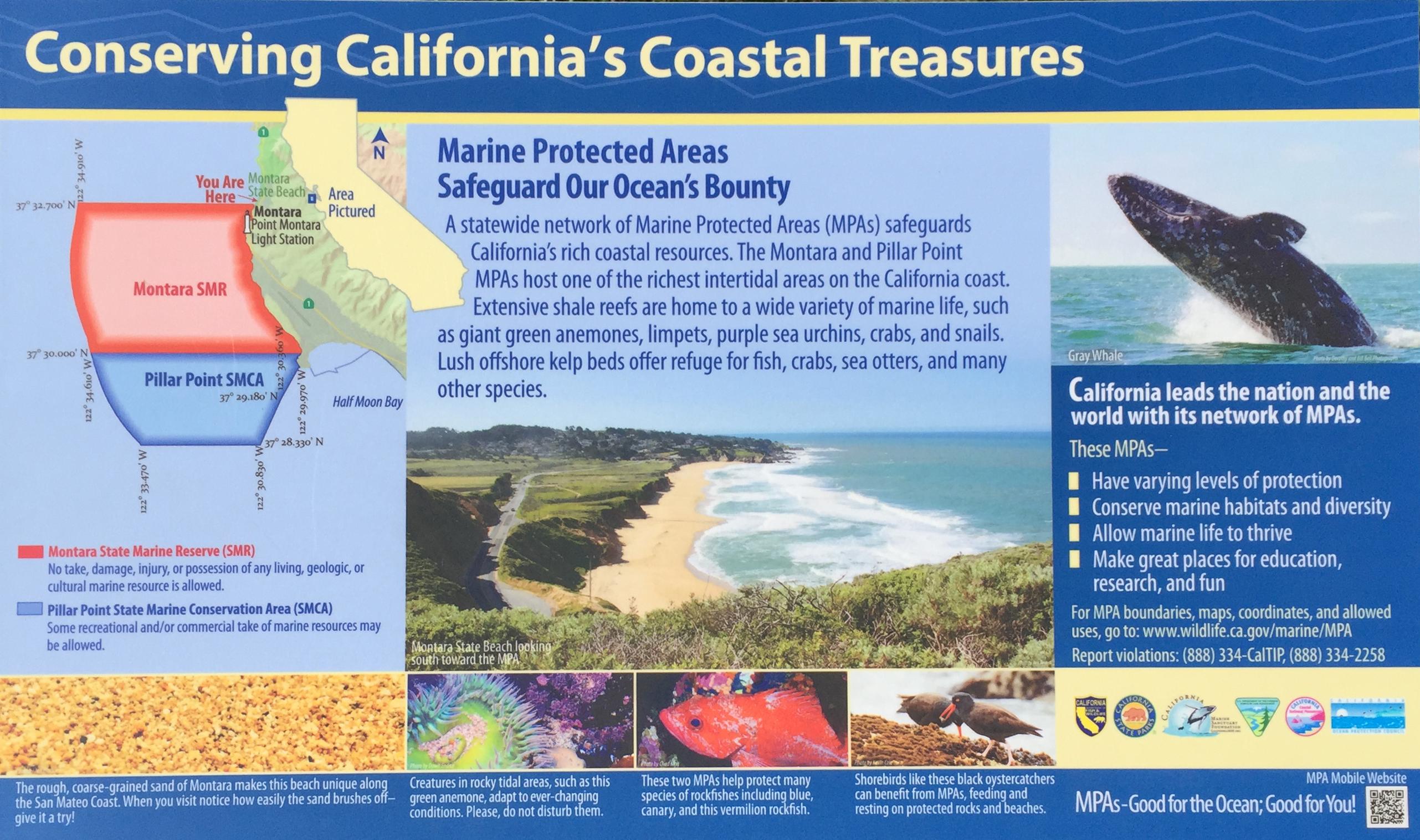The south end of Montara Beach has rich but mostly inaccessible tide pools. Harbor seals occasionally haul out at Montara. The beach is bounded by low hills both to the north and south. Montara Mountain—or McNee Ranch, also part of Montara State Beach—is described separately. The granitic rocks of Montara Mountain are the main source of sand for this beach. Since the sand travels such a short distance, the grains have not had a chance to weather into fine particles and tend to be quite coarse.
There are two beach access points from the bluff area via stairs. One access is off Highway 1 across from Second Street; the second access is located about a half mile north on the ocean side of the highway. The beach can also be reached by a rough dirt trail just north of the south stairs.
Dogs are permitted provided they are controlled with a leash of no more than six feet at all times.

